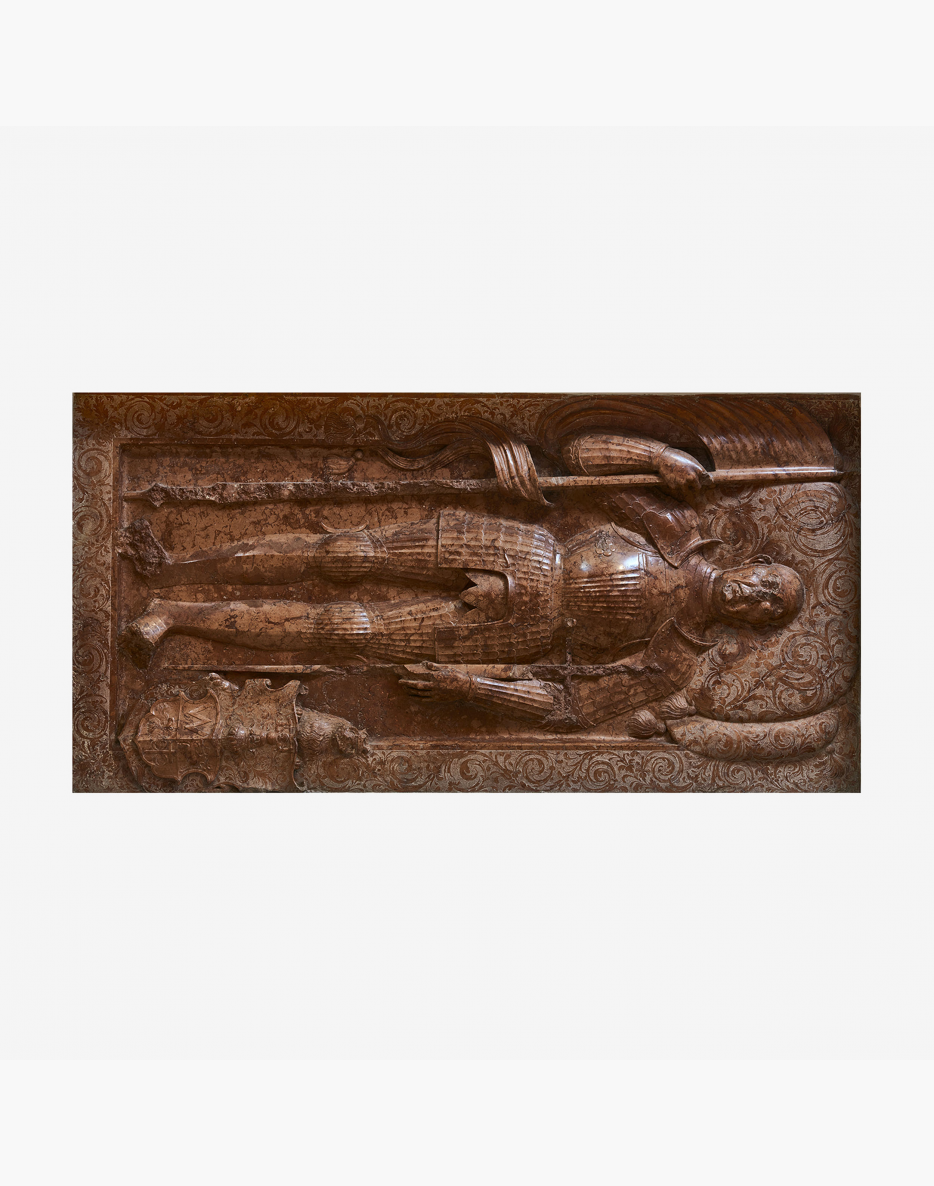Albertus Goštautas (1480–1539) was the son of Martinus Goštautas and Anne, the duchess of Alšėnai. He became chancellor of the Grand Duchy of Lithuania and voivode of Vilnius, and was called ‘the Viceroy of Lithuania’ due to his political influence in the first half of the 16th century. He paid much attention to the chapel, and was one of the first well-educated Lithuanian nobles to make impressive endowments to commemorate his family. The extravagant red marble monument erected after Albertus Goštautas’ death was most likely commissioned by his son Stanislaus, the first husband of Queen Barbara Radvilaitė (Radziwiłł). The Goštautas line ended with his death, and the monument remained unfinished: only a tombstone plaque has survived, with a relief image of the noble in Renaissance armour holding a sword and a banner.
The plaque was partly destroyed during the wars of the mid-17th century, but it still preserves the features of Albertus Goštautas, one of Lithuania’s most prominent nobles, and his coat of arms, which combines the crests of his father, his mother, and both grandparents. The surviving tombstone plaque of Albertus Goštautas in relief, with features of Gothic and Renaissance art, is the earliest work of memorial sculpture in Lithuania.
